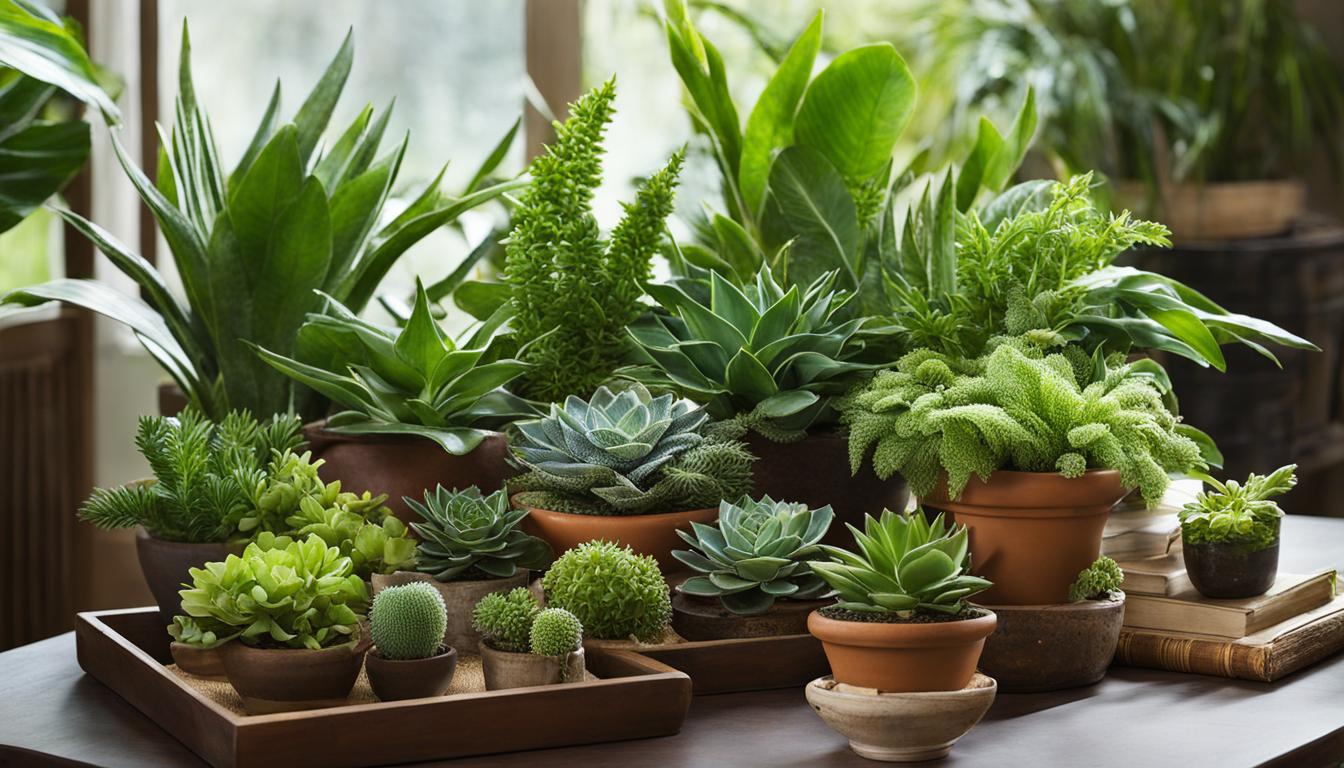
Are you looking to bring some greenery into your home? Houseplants not only add a touch of nature to your living space but also offer a range of benefits, from improving air quality to boosting your mood.
With so many varieties available, it can be overwhelming to choose the right houseplant for your home.
That’s why I’ve compiled a list of 62 popular houseplants, suitable for all skill levels and types of homes. Whether you have a small apartment or a spacious house, there’s a houseplant that will thrive in your environment.
Key Takeaways:
- There is a wide variety of popular houseplants to choose from, each with its own unique care requirements and benefits.
- Indoor plants range from low maintenance options to flowering plants that add a pop of color to your space.
- If you have limited natural light or live in a small space, there are specific houseplants that can thrive in these conditions.
- For pet owners, it’s important to choose houseplants that are safe for furry friends.
- Indoor plants offer health benefits, such as improving air quality and reducing stress.
Basic Information of 62 Popular Indoor Plants
| Plant Name | Watering | Lighting | Fertilizer | Toxicity | Specific Property |
| Pothos Collection (Epipremnum aureum) | Low | Low to bright | Monthly | Toxic | Air purifying |
| Peace Lily (Spathiphyllum spp.) | Medium | Low to medium | Bimonthly | Toxic | Humidity loving |
| Tillandsia Ionantha (Tillandsia ionantha) | High (misting) | Bright, indirect | Monthly (foliar feed) | Non-toxic | Air plant, no soil needed |
| ZZ Plant (Zamioculcas zamiifolia) | Low | Low to bright | Every 2-3 months | Toxic | Drought tolerant |
| Cast Iron Plant (Aspidistra elatior) | Low | Low | Semi-annually | Non-toxic | Shade tolerant |
| Snake Plant (Sansevieria trifasciata) | Low | Low to bright | Every 2 months | Toxic | Air purifying |
| African Violet (Saintpaulia spp.) | Medium | Moderate | Every 2 weeks (high phosphorus) | Non-toxic | Blooming |
| Bird’s Nest Fern (Asplenium nidus) | Medium | Low to medium | Monthly | Non-toxic | Epiphytic |
| Pilea Peperomioides (Pilea peperomioides) | Medium | Bright, indirect | Monthly | Non-toxic | Fast-growing |
| Rose Geranium (Pelargonium graveolens) | Medium | Bright | Every 2 weeks | Non-toxic | Fragrant leaves |
| Orchid (Orchidaceae spp.) | Medium | Bright, indirect | Monthly | Non-toxic | Epiphytic, blooms |
| Parlor Palm (Chamaedorea elegans) | Medium | Low to bright | Every 2 months | Non-toxic | Pet-friendly |
| Staghorn Fern (Platycerium spp.) | Medium | Bright, indirect | Monthly during growing season | Non-toxic | Epiphytic with unique fronds |
| Ivy (Hedera spp.) | Medium | Bright, indirect | Monthly | Toxic | Climbing |
| Philodendron (Philodendron spp.) | Medium | Low to bright | Every 2 months | Toxic | Varied leaf shapes |
| Spider Plant (Chlorophytum comosum) | Medium | Bright, indirect | Every 2 weeks during growth | Non-toxic | Air purifying, offspring propagation |
| Prickly Party Collection (Cactaceae spp.) | Low to medium | Bright | Bi-monthly | Varies | Succulents variety |
| Monstera (Monstera deliciosa) | Medium | Bright, indirect | Every 2 months | Toxic | Large, distinctive leaves |
| Fiddle Leaf Fig (Ficus lyrata) | Medium | Bright | Every 2-3 months | Toxic | Large, leathery leaves |
| Bamboo Palm (Chamaedorea seifrizii) | Medium | Bright, indirect | Monthly | Non-toxic | Air purifying |
| Bromeliad (Bromeliaceae spp.) | Medium | Bright, indirect | Every 2 months | Non-toxic | Colorful bracts, central tank |
| Lavender (Lavandula spp.) | Low | Full sun | Bi-monthly | Non-toxic | Fragrant, therapeutic |
| Boston Fern (Nephrolepis exaltata) | High | Medium | Monthly | Non-toxic | Humidity loving |
| African Mask Plant (Alocasia amazonica) | Medium | Bright, indirect | Every 2 months | Toxic | Striking foliage |
| Areca Palm (Dypsis lutescens) | Medium | Bright, indirect | Every 2 months | Non-toxic | Air purifying |
| Button Fern (Pellaea rotundifolia) | Medium | Low to medium | Monthly | Non-toxic | Easy care |
| Calathea (Calathea spp.) | Medium | Low to medium | Every 6 weeks | Non-toxic | Ornamental leaves |
| Chinese Evergreen (Aglaonema spp.) | Low | Low to bright | Every 2 months | Toxic | Low light tolerant |
| Croton (Codiaeum variegatum) | Medium | Bright, indirect | Every 2 months | Toxic | Colorful foliage |
| Dieffenbachia (Dieffenbachia spp.) | Medium | Low to bright | Every 2 months | Toxic | Variegated leaves |
| Dracaena (Dracaena spp.) | Medium | Low to bright | Every 2 months | Toxic | Many varieties |
| Elephant Ear (Alocasia spp.) | Medium | Bright, indirect | Every 2 months | Toxic | Large leaves |
| English Ivy (Hedera helix) | Medium | Bright, indirect | Monthly | Toxic | Climbing vine |
| Flamingo Flower (Anthurium spp.) | Medium | Bright, indirect | Every 2 months | Toxic | Colorful spathes |
| Goldfish Plant (Nematanthus spp.) | Medium | Bright, indirect | Every 2 weeks during growth | Non-toxic | Blooms resemble goldfish |
| Hoya (Hoya spp.) | Low | Bright, indirect | Monthly | Non-toxic | Wax-like flowers |
| Jade Plant (Crassula ovata) | Low | Bright | Every 3 months | Toxic | Succulent, easy care |
| Lipstick Plant (Aeschynanthus spp.) | Medium | Bright, indirect | Every 2 weeks during growth | Non-toxic | Tubular red flowers |
| Maidenhair Fern (Adiantum spp.) | High | Low to medium | Monthly | Non-toxic | Delicate fronds |
| Nerve Plant (Fittonia spp.) | Medium | Low to medium | Monthly | Non-toxic | Veined leaves |
| Peace Lily (Spathiphyllum spp.) | Medium | Low to medium | Bimonthly | Toxic | White spathes |
| Peperomia (Peperomia spp.) | Low | Low to bright | Monthly | Non-toxic | Compact size |
| Ponytail Palm (Beaucarnea recurvata) | Low | Bright | Every 2-3 months | Non-toxic | Bulbous stem, drought tolerant |
| Prayer Plant (Maranta leuconeura) | Medium | Low to bright | Every 4 weeks | Non-toxic | Foliage moves in response to light |
| Rubber Plant (Ficus elastica) | Medium | Bright, indirect | Every 2-3 months | Toxic | Bold, glossy leaves |
| Schefflera (Schefflera arboricola) | Medium | Bright, indirect | Every 2 months | Toxic | Umbrella-shaped leaves |
| Swiss Cheese Plant (Monstera deliciosa) | Medium | Bright, indirect | Every 2 months | Toxic | Iconic split leaves |
| Zebra Plant (Aphelandra squarrosa) | Medium | Bright, indirect | Every 2 weeks during growth | Non-toxic | Striped leaves, yellow flowers |
| Wax Begonia (Begonia cucullata) | Medium | Bright, indirect | Every 2 weeks during growth | Non-toxic | Colorful flowers and waxy leaves |
| Christmas Cactus (Schlumbergera bridgesii) | Medium | Bright, indirect | Every 2 months during growth | Non-toxic | Festive blooms in winter |
| Kimberly Queen Fern (Nephrolepis obliterata) | Medium | Bright, indirect | Monthly | Non-toxic | Upright fronds, less shedding |
| Purple Waffle Plant (Hemigraphis ‘Exotica’) | Medium | Low to medium | Monthly | Non-toxic | Textured leaves with a purple hue |
| Watermelon Peperomia (Peperomia argyreia) | Low | Bright, indirect | Every 3 months | Non-toxic | Watermelon-like striped leaves |
| Lady Palm (Rhapis excelsa) | Medium | Bright, indirect | Every 2 months | Non-toxic | Elegant fan-shaped leaves |
| Chinese Fan Palm (Livistona chinensis) | Medium | Bright, indirect | Every 2 months | Non-toxic | Large, fan-like leaves |
| Coral Cactus (Euphorbia lactea ‘Cristata’) | Low | Bright, indirect | Every 3 months | Toxic | Unique coral-like appearance |
| Red Aglaonema (Aglaonema ‘Siam Aurora’) | Medium | Low to bright | Every 2 months | Toxic | Red-tinted leaves |
| Polka Dot Begonia (Begonia maculata) | Medium | Bright, indirect | Every 2 weeks during growth | Toxic | Spotted leaves, can bloom indoors |
| Venus Flytrap (Dionaea muscipula) | Medium | Bright, direct | Carnivorous, no fertilizer needed | Non-toxic | Insect-eating, interactive |
| String of Bananas (Senecio radicans) | Low | Bright, indirect | Every 2 months during growth | Toxic | Trailing succulent with banana-shaped leaves |
| Aspidistra (Aspidistra elatior) | Low | Low | Every 2 months | Non-toxic | Tolerant to neglect, shade-loving |
| Baby Rubber Plant (Peperomia obtusifolia) | Medium | Bright, indirect | Monthly | Non-toxic | Fleshy leaves, compact growth |
Best Low Maintenance Indoor Plants

When it comes to indoor plants, not everyone has the time or green thumb to devote to high-maintenance varieties. Luckily, there are plenty of low maintenance options available that can add beauty and greenery to your space without requiring constant care. Here are a few of the best low maintenance indoor plants:
Pothos Collection
The Pothos Collection, also known as devil’s ivy, is a popular choice for those seeking easy-to-care-for houseplants. These trailing vines have vibrant green leaves and can tolerate low light conditions, making them suitable for various areas in your home. Pothos plants are also known for their air-purifying qualities, making them a great choice for improving indoor air quality.
Peace Lily
The Peace Lily is another low maintenance houseplant that thrives in low light conditions. It features elegant white flowers and dark green foliage, adding a touch of elegance to any room.
Peace Lilies are also known for their ability to remove harmful toxins from the air, making them a great choice for improving indoor air quality. These plants require minimal watering and can tolerate occasional neglect, making them perfect for busy individuals.
Tillandsia Ionantha
The Tillandsia Ionantha, also known as an air plant, is an incredibly low maintenance option that doesn’t even require soil. These unique plants survive by absorbing nutrients and moisture from the air, making them incredibly versatile in terms of placement.
Simply mist them with water every few days and provide them with indirect light, and they will thrive. Air plants are great for adding a modern and minimalist touch to your space.
Best Low Maintenance Indoor Plants
| Plant | Light Requirements | Watering Needs | Additional Benefits |
|---|---|---|---|
| Pothos Collection | Low to moderate light | Allow soil to dry out between waterings | Air-purifying qualities |
| Peace Lily | Low to moderate light | Water when soil is dry to the touch | Air-purifying qualities |
| Tillandsia Ionantha | Indirect light | Mist with water every few days | No soil required |
These low maintenance indoor plants are perfect for those who want to enjoy the beauty of nature without the constant upkeep. Whether you choose a Pothos Collection, Peace Lily, or Tillandsia Ionantha, you can be confident that these houseplants will thrive with minimal care. So go ahead and add some greenery to your space without the stress of high maintenance plants.
Best Low-Light Indoor Plants
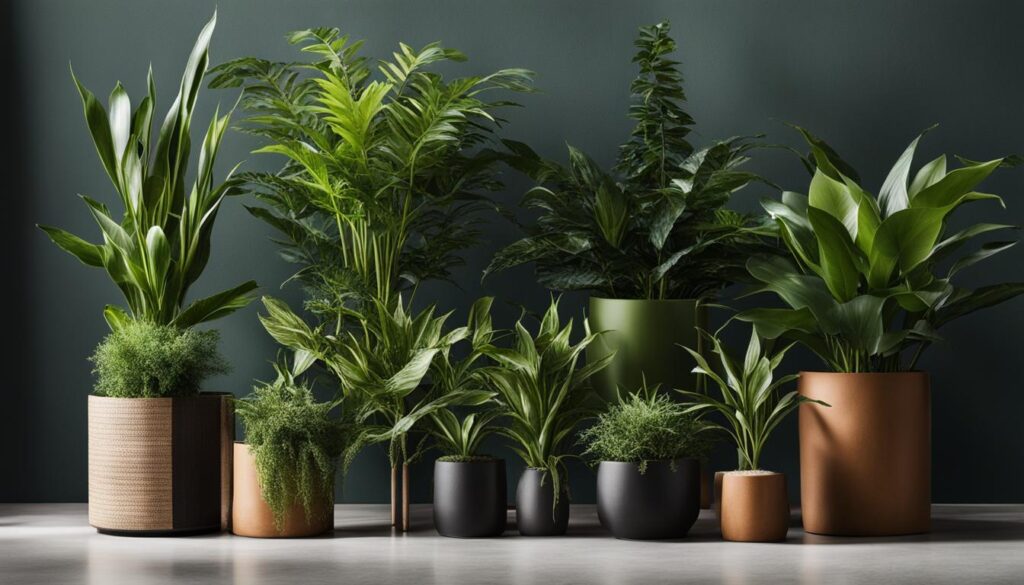
If you have a home with limited natural light, there are still options for you. Low-light indoor plants can thrive in environments with minimal sunlight, making them perfect choices for spaces that lack adequate lighting. These plants not only add greenery to your home but also bring life to dark corners and rooms.
| Plant | Light Requirements | Care Level | Benefits |
|---|---|---|---|
| ZZ Plant | Low to moderate indirect light | Low maintenance | Air-purifying properties |
| Cast Iron Plant | Low to moderate indirect light | Low maintenance | Tolerates low-light conditions and neglect |
The ZZ Plant (Zamioculcas zamiifolia) is a popular low-light indoor plant known for its ability to survive in challenging conditions. It can thrive in both low to moderate indirect light, making it a versatile choice for any room with limited natural light. The ZZ Plant is also known for its air-purifying properties, helping to improve the quality of indoor air.
The Cast Iron Plant (Aspidistra elatior) is another excellent choice for low-light environments. It can tolerate a wide range of light conditions, from low to moderate indirect light.
This plant is extremely resilient and can withstand neglect, making it an ideal choice for those who are new to indoor gardening or have a busy lifestyle.
When caring for low-light indoor plants, it’s important to keep in mind their specific light requirements. While these plants can tolerate low-light conditions, they still need some exposure to natural light. Place them near windows or other sources of indirect light to provide them with the necessary energy for photosynthesis.
A Few Tips for Growing Low-Light Indoor Plants:
- Water the plants only when the top inch of soil feels dry.
- Avoid overwatering, as it can lead to root rot.
- Use well-draining soil to prevent waterlogged roots.
- Dust the leaves regularly to ensure proper light absorption.
- Consider using artificial grow lights to supplement the lack of natural light.
With the right selection of low-light indoor plants and proper care, you can create a lush and green oasis in even the darkest corners of your home.
Best Indoor Plants for Small Spaces
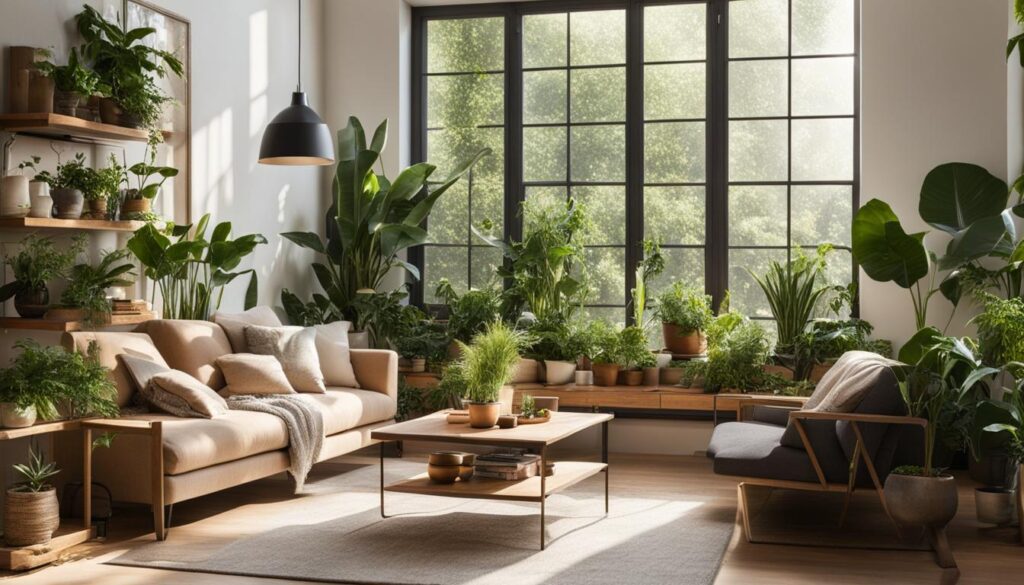
When it comes to decorating small spaces, indoor plants can play a vital role in adding a touch of greenery and breathing life into the area. However, not all houseplants are suitable for compact spaces.
That’s why I’ve curated a list of the best indoor plants for small spaces, ensuring that you can enjoy the benefits of plants even if you have limited room.
Snake Plant
The Snake Plant, also known as Sansevieria, is a popular choice for small spaces due to its narrow, upright leaves. Its architectural shape adds a modern and stylish element to any room. Additionally, Snake Plants are low-maintenance and can tolerate a variety of light levels, making them ideal for small spaces that may not receive direct sunlight.
African Violet
The African Violet is a compact flowering plant that adds a pop of color to any small space. With its fuzzy leaves and delicate blooms, it brings a touch of elegance to windowsills, shelves, or tabletops. African Violets prefer bright, indirect light and consistent watering, making them perfect for indoor environments.
“Indoor plants can transform small spaces by adding a touch of nature and creating a calming atmosphere.”
By choosing indoor plants that are specifically suited for small spaces, you can enhance the aesthetics of your home while still maintaining a functional and clutter-free environment. Whether you opt for the architectural beauty of the Snake Plant or the vibrant blooms of the African Violet, these compact houseplants are sure to bring life and cheer to any limited space.
Best Indoor Plants for Pet Owners
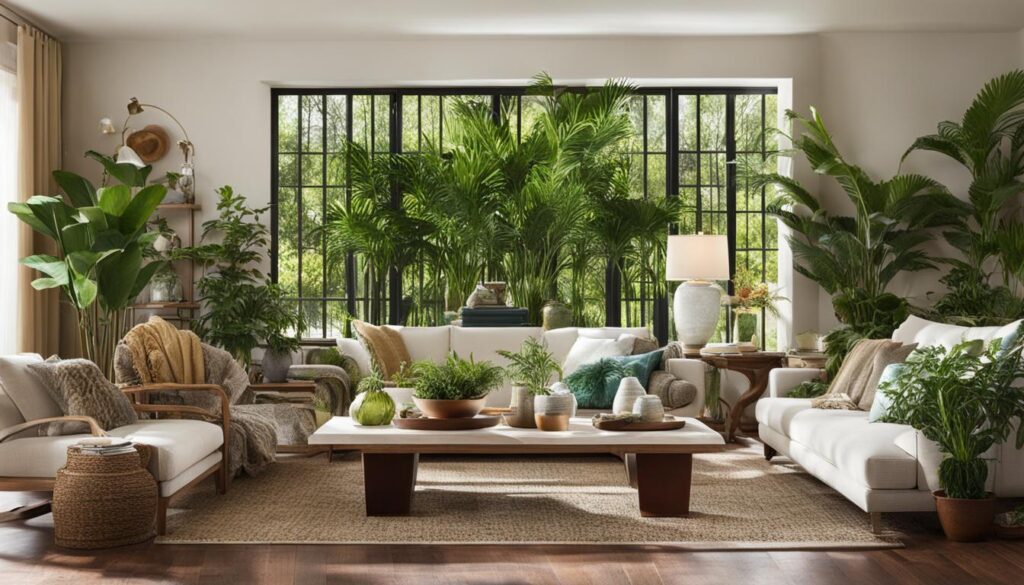
When choosing indoor plants for your home, it’s important to consider the safety of your pets. Some houseplants can be toxic to animals if ingested, so opting for pet-friendly options is crucial. Here are some non-toxic indoor plants that are safe for your furry friends:
- Bird’s Nest Fern: This lush and vibrant fern is not only safe for pets but also adds a touch of tropical beauty to your indoor space. Its wavy, wide leaves make it an attractive addition to any room.
- Pilea Peperomioides: Also known as the Chinese Money Plant, the Pilea Peperomioides is a trendy plant with round, coin-like leaves. It is safe for pets and is sure to bring a modern aesthetic to your home.
These pet-friendly indoor plants not only provide visual appeal but also contribute to a healthier indoor environment by improving air quality. As responsible pet owners, it’s essential to create a safe and enjoyable space for both our furry friends and ourselves.
“Choosing pet-friendly plants ensures that your beloved animals can explore their surroundings without the risk of accidental poisoning. The Bird’s Nest Fern and Pilea Peperomioides are among the safest options for pet owners.” – Plant Expert
Pet-Friendly Indoor Plants
| Plant Name | Pet-Friendly | Description |
|---|---|---|
| Bird’s Nest Fern | Yes | A lush fern with wavy, wide leaves. Adds a touch of tropical beauty to any space. |
| Pilea Peperomioides | Yes | A trendy plant with round, coin-like leaves. Brings a modern aesthetic to your home. |
Best Flowering Indoor Plants

When it comes to adding a touch of color and vibrancy to your indoor space, flowering indoor plants are a fantastic choice. These plants not only bring beauty to your home but also create a cheerful and inviting atmosphere. Whether you have a green thumb or are new to indoor gardening, there are several flowering houseplants that are easy to care for and will reward you with stunning blooms.
Rose Geranium
The Rose Geranium is a delightful flowering indoor plant that is known for its fragrant leaves and small, delicate flowers. Its foliage releases a sweet, floral scent when touched or brushed against, making it a wonderful addition to any room. With proper care, this plant produces clusters of pink or white flowers that resemble miniature roses. The Rose Geranium thrives in bright, indirect light and prefers well-draining soil. Keep the soil moderately moist, allowing it to dry slightly between waterings.
African Violet
The African Violet is a popular choice for indoor gardeners due to its stunning clusters of colorful flowers. Available in a wide range of shades, including purple, pink, white, and blue, these plants can brighten up any space. African Violets prefer bright, indirect light and need well-draining soil to prevent root rot. Keep the soil consistently moist, but avoid overwatering to prevent crown rot. With proper care, these plants will continue to bloom throughout the year.
Orchid
Orchids are renowned for their exquisite beauty and are often associated with elegance and luxury. These delicate flowers come in various colors, shapes, and sizes, adding a touch of sophistication to any room. Orchids require specific care, including filtered light, high humidity, and a well-draining orchid mix. Water them sparingly, allowing the roots to dry out slightly between waterings. With the right conditions, orchids can bloom for several months, making them a rewarding choice for flowering indoor plants.
| Flowering Indoor Plant | Light Requirements | Watering Needs | Care Difficulty |
|---|---|---|---|
| Rose Geranium | Bright, indirect light | Moderately moist soil | Easy |
| African Violet | Bright, indirect light | Consistently moist soil | Moderate |
| Orchid | Filtered light | Sparingly, allow roots to dry | Intermediate |
Adding flowering indoor plants to your home not only brings visual appeal but also creates a soothing and uplifting environment. Whether you choose the fragrant Rose Geranium, the vibrant African Violet, or the elegant Orchid, these plants will brighten up your space and provide a sense of natural beauty. Remember to provide the appropriate light, water, and care for each plant to ensure they continue to bloom and thrive.
Best Air Purifying Indoor Plants
Indoor plants not only add beauty and a touch of nature to your home, but they can also contribute to better air quality. Certain plants have the ability to purify the air by removing harmful toxins and releasing oxygen. If you’re looking to improve the air quality in your living spaces, consider incorporating air purifying indoor plants into your home.
Benefits of Air Purifying Indoor Plants
Indoor air can sometimes be more polluted than outdoor air, with various sources contributing to the presence of toxins. Air purifying plants can help combat this issue by filtering harmful substances and releasing clean air. These plants have been shown to reduce levels of volatile organic compounds (VOCs), such as benzene and formaldehyde, which can be found in household products and furniture.
In addition to their air purifying properties, these plants can also promote a sense of well-being and relaxation. Studies have shown that being surrounded by greenery can reduce stress and improve mood, contributing to a healthier and more harmonious living environment.
Top Air Purifying Indoor Plants
| Plant Name | Scientific Name | Benefits |
|---|---|---|
| Parlor Palm | Chamaedorea elegans | Filters airborne toxins and adds humidity to the air. |
| Boston Fern | Nephrolepis exaltata | Removes formaldehyde and improves indoor air quality. |
| Ivy | Hedera spp. | Filters chemicals like benzene and trichloroethylene from the air. |
These air purifying indoor plants are not only aesthetically pleasing but also effective in improving air quality. By incorporating them into your home, you can create a healthier and more refreshing environment for you and your family.
Remember to place these plants in well-lit areas of your home and follow care instructions to ensure their optimum growth and air purifying benefits.
Best Indoor Plants to Build Confidence
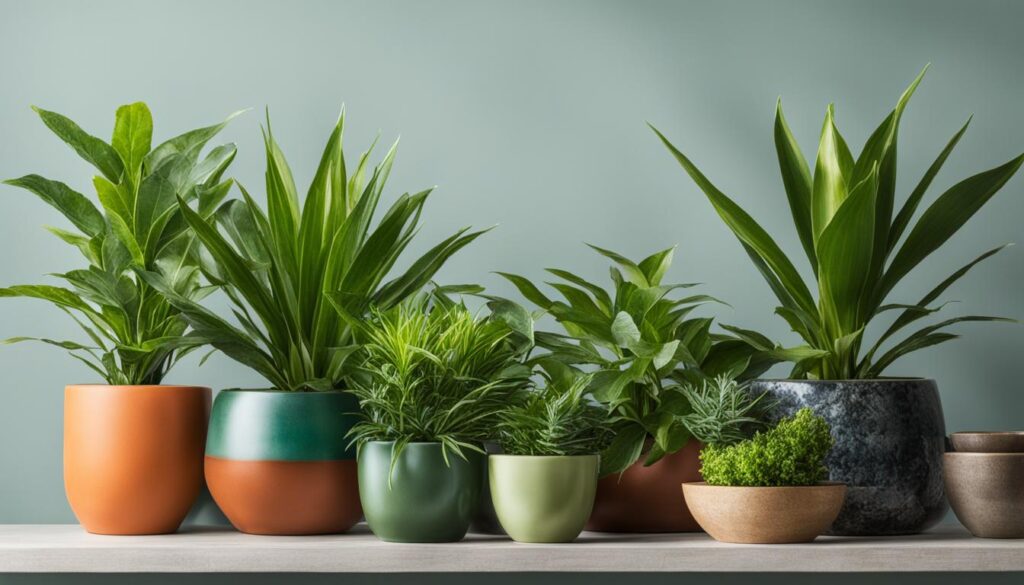
Indoor plants have a unique ability to inspire confidence and create a sense of connection to nature. The Philodendron, Spider Plant, and Prickly Party Collection are excellent choices for those seeking confidence-boosting houseplants. These plants are known for their resilience and ability to thrive in various environments, making them perfect companions for individuals looking to build their plant care skills.
The Philodendron, with its lush green foliage, adds a touch of elegance to any room. Its low-maintenance nature and adaptability make it an ideal choice for beginners or those with busy lifestyles. The Spider Plant, with its cascading green and white leaves, is a symbol of vitality and resilience. It thrives in a range of light conditions and is popular among novice gardeners for its forgiving nature.
“The Philodendron and Spider Plant are both great choices for boosting confidence in caring for plants. They are easy to grow, adaptable to different environments, and can withstand some neglect without sacrificing their beauty,” says plant expert Dr. Green.
The Prickly Party Collection, featuring cacti and succulents, embraces the spirit of resilience and self-care. These plants require minimal watering and thrive in bright light conditions. Their unique shapes and textures can serve as a reminder of our own ability to adapt and thrive even in challenging circumstances.
Comparison of Confidence-Boosting Houseplants
| Indoor Plant | Benefits | Care Level |
|---|---|---|
| Philodendron | Enhances visual appeal, improves air quality | Easy |
| Spider Plant | Symbol of resilience, purifies air | Easy |
| Prickly Party Collection | Embraces resilience, requires minimal watering | Low |
By nurturing and caring for these confidence-boosting houseplants, individuals can gain a sense of accomplishment and personal growth. The journey of tending to these plants can mirror our own life journeys, instilling a sense of confidence and resilience in our own abilities.
So, whether you’re a beginner or an experienced indoor gardener, consider incorporating the Philodendron, Spider Plant, or Prickly Party Collection into your home. Not only will these plants enhance the aesthetic appeal of your space, but they will also serve as daily reminders of your own strength and capability.
Best “Next Level” Indoor Plants
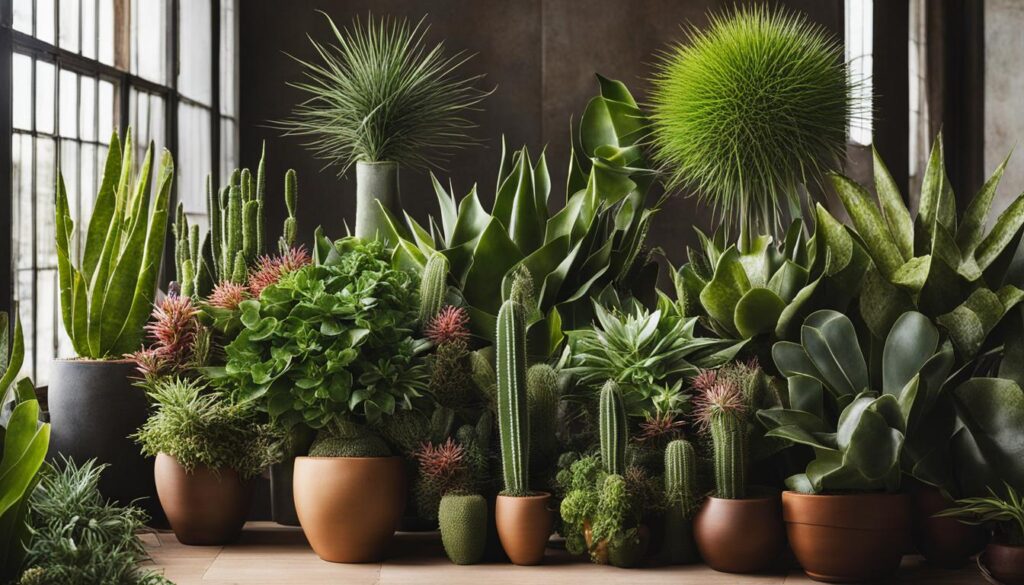
For indoor gardening enthusiasts looking to elevate their plant collection, there are several unique and advanced houseplants that can add a touch of sophistication to any space. These exceptional plants not only boast striking appearances but also require a higher level of care and attention to thrive.
One of the standout “next level” indoor plants is the Monstera (Monstera deliciosa). With its large, fenestrated leaves and impressive size, this plant makes a bold statement in any room.
It thrives in bright, indirect light and requires regular watering to keep its soil consistently moist. The Monstera is a popular choice among plant collectors and interior designers alike.
Another impressive option is the Fiddle Leaf Fig (Ficus lyrata). This tree-like plant features large, glossy leaves that create a dramatic focal point in any space. It prefers bright, indirect light and thrives when placed near a sunny window.
The Fiddle Leaf Fig requires regular watering, allowing the top inch of soil to dry out before watering again. With its elegant silhouette and lush foliage, it’s no wonder this plant has become an icon of modern interior design.
Comparison of Monstera and Fiddle Leaf Fig
| Feature | Monstera | Fiddle Leaf Fig |
|---|---|---|
| Leaf Appearance | Fenestrated (with holes) | Glossy and broad |
| Size | Large, can grow up to several feet tall | Tall, tree-like, can grow up to six feet tall |
| Light Requirements | Bright, indirect light | Bright, indirect light near a sunny window |
| Watering | Regular, keeping soil consistently moist | Allow top inch of soil to dry out before watering |
When caring for these advanced houseplants, it’s important to stay attentive to their specific needs. Regularly inspecting the leaves for signs of pests or diseases and providing appropriate fertilization are essential for their well-being.
These “next level” indoor plants require dedication and a deep appreciation for their beauty and significance in interior design.
Whether you choose the Monstera or the Fiddle Leaf Fig, these unique indoor plants will undoubtedly elevate the aesthetic of your space while providing a rewarding and fulfilling gardening experience.
How to Choose the Best Indoor Plants
When it comes to selecting the right indoor plants for your home or office, there are a few key factors to consider. With so many options available, it can be overwhelming to determine which plants will thrive in your space and suit your lifestyle. Here are some helpful tips for choosing the best indoor plants:
Determine Your Space and Lighting Conditions
Before purchasing any indoor plants, it’s important to assess the space you have available and the lighting conditions. Some plants require bright, direct sunlight, while others can thrive in low-light environments.
Consider the amount of natural light your space receives throughout the day and choose plants that will thrive in those specific conditions.
Consider Maintenance Requirements
Another important factor to consider is the maintenance requirements of the plants you’re interested in. Some plants require frequent watering, while others can go longer periods without water.
Think about your lifestyle and how much time you can dedicate to caring for your indoor plants. If you’re a busy individual or new to plant care, opt for low-maintenance plants that won’t require constant attention.
Showcase Your Personal Style
Your indoor plants can also reflect your personal style and enhance the aesthetics of your space. Consider the overall theme and decor of your home or office when choosing plants.
Are you drawn to lush, tropical plants or minimalist and modern succulents? Select indoor plants that will complement your existing decor and create a cohesive look.
| Plant Type | Lighting Requirements | Maintenance Level | Style |
|---|---|---|---|
| Snake Plant | Low to bright indirect light | Low maintenance | Minimalist, modern |
| Pothos | Low to bright indirect light | Low maintenance | Versatile, trailing vines |
| Fiddle Leaf Fig | Bright, indirect light | Moderate maintenance | Statement, trendy |
| Spider Plant | Moderate to bright indirect light | Low maintenance | Classic, adaptable |
By considering these tips and factors, you can confidently choose the best indoor plants that will thrive in your space and bring beauty and nature indoors. Remember to assess your space and lighting conditions, consider maintenance requirements, and showcase your personal style when making your selection. With the right indoor plants, you can create a tranquil and inviting environment that promotes well-being and enhances your living or working space.
How to Care for Indoor Plants
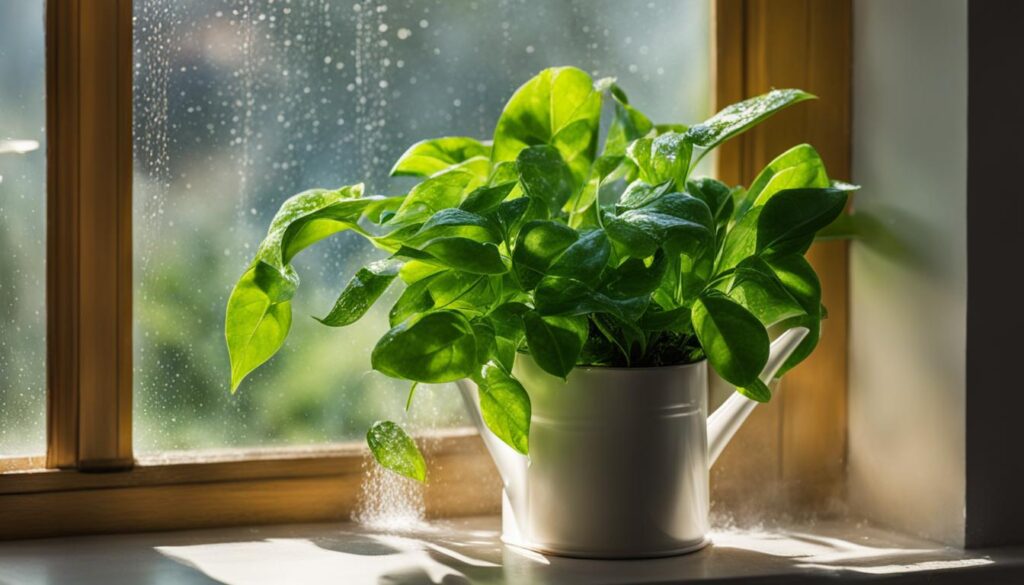
Proper care is essential for the health and longevity of indoor plants. By understanding their specific needs and providing the right conditions, you can ensure that your plants thrive and bring beauty to your home. Here are some important tips for caring for your houseplants:
- Light: Different plants have varying light requirements. Place sun-loving plants near a window with bright, indirect light, while shade-tolerant plants can thrive in areas with less natural light.
- Watering: Avoid overwatering or underwatering your plants, as both can be detrimental. Check the moisture levels in the soil regularly and adjust your watering schedule accordingly. As a general rule, water when the top inch of soil feels dry.
- Humidity: Some plants prefer higher humidity levels. You can increase humidity by placing a tray filled with water near your plants or using a humidifier.
- Fertilizing: Indoor plants benefit from regular fertilization during the growing season. Use a balanced, water-soluble fertilizer at half the recommended strength every two weeks.
Additionally, here are a few more care tips to keep in mind:
- Pest control: Inspect your plants regularly for pests such as aphids or spider mites. If you notice any signs of infestation, treat them promptly with appropriate organic or chemical solutions.
- Pruning: Regularly remove yellowed or damaged leaves to maintain the overall health and aesthetics of your plants.
- Rotation: Rotate your plants every few weeks to ensure even growth and prevent them from leaning towards the light source.
Remember, each plant has unique care requirements, so it’s important to research and understand the specific needs of your indoor plants. By providing the right amount of light, water, humidity, and attention, you can create an environment where your plants will thrive.
Troubleshooting Common Issues
Despite your best efforts, it’s common for indoor plants to encounter some challenges. Here are a few common issues and how to address them:
“My plants are wilting.”
Wilting can be a sign of both overwatering and underwatering. Check the soil moisture levels and adjust your watering accordingly. If the soil is too wet, allow it to dry out between waterings. If it’s too dry, increase your watering frequency.
“My plants have yellow leaves.”
Yellowing leaves can be caused by various factors, including overwatering, underwatering, nutrient deficiencies, or pests. Assess the conditions of your plant and make any necessary adjustments. If you suspect nutrient deficiencies, consider fertilizing your plants.
By paying close attention to your plants and addressing any issues promptly, you can overcome challenges and maintain healthy, vibrant indoor plants.
Health Benefits of Indoor Plants
Indoor plants have more to offer than just visual appeal. They can also significantly contribute to improving our well-being. Studies have shown that having houseplants can have numerous health benefits, both physical and emotional.
Air Purification
One of the key benefits of indoor plants is their ability to purify the air. They naturally remove toxins and pollutants from the surroundings, providing us with cleaner and fresher air to breathe.
Plants such as the Snake Plant and Peace Lily are known for their air-purifying properties, helping to reduce airborne pollutants that can cause respiratory issues and allergies.
Stress Reduction
Being around plants can also have a calming effect on our minds and bodies. Research has shown that the presence of indoor greenery can help reduce stress levels and promote relaxation. Simply caring for and nurturing plants can be therapeutic, providing a sense of purpose and mindfulness.
Moreover, studies have found that being in close proximity to nature, even through indoor plants, can lower blood pressure and heart rate, helping to alleviate stress and anxiety.
Mood Enhancement
Indoor plants can also have a positive impact on our mood and overall well-being. The natural beauty and vibrant colors of plants can create a visually pleasing and uplifting environment. Additionally, the act of caring for plants and watching them grow can bring joy and a sense of accomplishment.
Furthermore, indoor plants release oxygen and increase humidity levels, creating a more comfortable and refreshing atmosphere. This can help improve concentration, boost productivity, and enhance our overall mood and cognitive function.
Indoor plants have numerous health benefits, making them an excellent addition to any home or office space. From purifying the air to reducing stress and enhancing mood, these green companions can contribute to our overall well-being. So, consider bringing some indoor plants into your living spaces and experience the positive effects they can have on your health and happiness.
Most Beautiful Indoor Plants
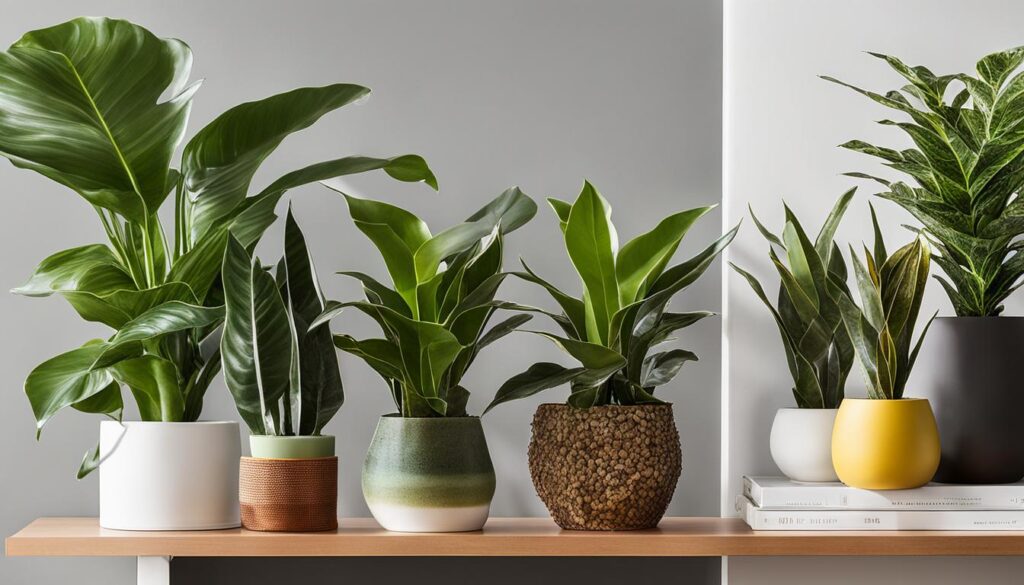
Indoor plants not only bring a touch of nature into our homes but also have the power to uplift and beautify any space. If you’re looking to add a stunning statement piece to your indoor garden, consider these most beautiful indoor plants:
1. Bamboo Palm
The Bamboo Palm (Chamaedorea seifrizii) is a graceful, slender plant that adds an instant tropical vibe to any room. With its feathery leaves and tall, slender stems, it creates a visual focal point. This plant thrives in bright, indirect light and requires regular watering to keep its soil consistently moist.
2. Philodendron
The Philodendron is a versatile plant with various species, each offering unique foliage patterns and colors. The heart-shaped leaves of the Philodendron make it a visually appealing addition to any indoor space. It prefers bright, indirect light and well-draining soil. With proper care, this plant can grow to stunning lengths, cascading down from hanging baskets or climbing up a trellis.
3. Bromeliad
The Bromeliad is a striking plant known for its vibrant and long-lasting flowers. Available in a range of colors, including red, orange, pink, and purple, it adds a pop of color and a touch of exotic beauty to any room. Bromeliads prefer bright, indirect light and well-draining soil. These plants are low-maintenance and can thrive with minimal care, making them perfect for busy plant enthusiasts.
When choosing the most beautiful indoor plants, consider their unique characteristics, such as leaf shape, color, and overall aesthetic appeal.
Remember to provide them with the right amount of light, water, and nutrients to ensure their beauty and health. Incorporating these stunning plants into your indoor garden will elevate the visual appeal of your space and create a serene atmosphere.
Easiest Indoor Plants to Keep Alive
When it comes to indoor gardening, not everyone has a green thumb. But fear not! There are plenty of easy-to-care-for indoor plants that even beginners can successfully keep alive.
These low maintenance houseplants require minimal attention and can thrive in various light conditions, making them perfect for those who are new to the world of indoor gardening. Here are some beginner-friendly houseplants that are known for their resilience:
- Spider Plant (Chlorophytum comosum): Spider plants are incredibly resilient and can tolerate a wide range of light conditions, from bright indirect light to low light. They require minimal watering and can even withstand some neglect.
- Snake Plant (Sansevieria trifasciata): Snake plants are ideal for those who forget to water their plants. They can survive in low light conditions and only need to be watered sparingly, making them perfect for busy individuals.
- Peace Lily (Spathiphyllum): Peace lilies are not only visually appealing with their elegant white flowers, but they are also easy to care for. They thrive in low light conditions and can even indicate when they need watering by drooping their leaves.
These beginner-friendly houseplants are not only easy to care for but also offer a range of benefits. They can help purify the air, add beauty to your space, and even improve your mood. With a little bit of love and attention, these low maintenance houseplants can bring a touch of nature into your home without requiring too much effort.
Comparison of Easy-to-Care-for Indoor Plants
| Plant | Light Requirements | Watering Needs | Benefits |
|---|---|---|---|
| Spider Plant | Can tolerate a wide range of light conditions, from bright indirect light to low light. | Minimal watering, can withstand some neglect. | Air-purifying properties, easy to propagate. |
| Snake Plant | Thrives in low light conditions. | Only needs to be watered sparingly. | Improves air quality, low maintenance. |
| Peace Lily | Thrives in low light conditions. | Droops its leaves to indicate when it needs watering. | Air-purifying properties, adds beauty to space. |
“Indoor gardening doesn’t have to be intimidating. Start with these easy-to-care-for houseplants, and you’ll soon discover the joy and benefits of having greenery in your home.” – Plant Enthusiast
Best Indoor Plants for Specific Needs
When it comes to indoor plants, there are options available to suit specific needs and purposes. Whether you’re looking for plants to improve your sleep, boost productivity, or add a touch of tropical charm to your space, there’s something for everyone. Let’s explore some of the best indoor plants for specific needs:
Plants for Better Sleep:
If you have trouble falling asleep or suffer from insomnia, certain plants can help create a calming environment in your bedroom.
Lavender plants are known for their soothing scent that promotes relaxation and can help improve sleep quality. Another great option is the Snake Plant, which releases oxygen at night, making it an ideal bedroom companion.
Plants to Boost Productivity:
If you’re looking to increase focus and productivity in your workspace, consider adding some plants that are known to improve cognitive function.
The Peace Lily is a popular choice as it not only enhances air quality but also adds a touch of beauty to your surroundings. Another excellent option is the Spider Plant, which is believed to reduce stress levels and enhance creativity.
Plants with Air-Purifying Properties:
If you’re concerned about the air quality in your home, certain plants can act as natural air purifiers. The Boston Fern is known for its ability to remove toxins from the air, making it a great choice for those with respiratory issues or allergies. The Snake Plant, mentioned earlier, is also a powerful air purifier, removing pollutants and producing oxygen.
| Plant | Specific Property |
|---|---|
| Lavender | Improves sleep quality |
| Snake Plant | Releases oxygen at night, improves air quality |
| Peace Lily | Enhances air quality, promotes productivity |
| Spider Plant | Reduces stress levels, enhances creativity |
| Boston Fern | Removes toxins from the air |
Plants for a Tropical Vibe:
If you’re looking to bring a taste of the tropics into your home, there are several indoor plants that can create a lush, exotic atmosphere.
The Monstera is a popular choice with its large, vibrant leaves that add a tropical feel to any space. Another option is the Bird of Paradise, which features colorful, bird-like flowers that resemble the beauty of a tropical paradise.
Whether you’re seeking better sleep, improved air quality, or simply want to create a specific ambiance in your home, there are indoor plants that can fulfill your needs. Consider the specific properties and benefits of different plants when choosing the ones that will best suit your desired outcome.
Wrapping Up
Selecting the perfect indoor plants for your home is an exciting endeavor. With 62 popular varieties to choose from, you have endless options to enhance your living space. Whether you’re a novice or an experienced indoor gardener, there’s a plant that fits your skill level and lifestyle.
Consider the specific needs of your space when making your choices. Determine the level of maintenance and care you can provide, as well as the amount of natural light available. Additionally, think about any specific benefits you’re seeking, such as air purification or pet-friendliness.
Remember that proper plant care is essential for the well-being of your indoor greenery. Pay attention to light requirements, watering schedules, and other specific care instructions for each plant. By providing the right environment and attention, your indoor plants will thrive and bring beauty into your home.
Finding the perfect indoor plants is a creative process that allows you to express your style and personalize your living space. Enjoy the journey of exploring different options and watching your indoor garden flourish.
FAQ
What are the most popular houseplants?
The most popular houseplants include the Peace Lily, Pothos Collection, and Tillandsia Ionantha.
What are some low maintenance indoor plants?
Some low maintenance indoor plants are the Peace Lily, Pothos Collection, and Tillandsia Ionantha.
What are the best indoor plants for low-light conditions?
The best indoor plants for low-light conditions are the ZZ Plant and Cast Iron Plant.
What are some indoor plants suitable for small spaces?
The Snake Plant and African Violet are ideal for small spaces.
Are there any indoor plants that are safe for pets?
Yes, the Bird’s Nest Fern and Pilea Peperomioides are safe for pets.
Which indoor plants have flowers?
The Anthurium and Orange Orchid are indoor plants that have flowers.
Can indoor plants improve air quality?
Yes, the Parlor Palm, Boston Fern, and Ivy are indoor plants known for purifying the air.
What indoor plants can help build confidence?
The Philodendron, Spider Plant, and Prickly Party Collection are known for their resilience and confidence-building qualities.
What are some unique and striking indoor plants?
The Monstera and Fiddle Leaf Fig are perfect choices for those looking for unique and striking indoor plants.
What should I consider when choosing indoor plants?
When choosing indoor plants, factors such as hardiness, aesthetics, care requirements, and cost should be considered.
How should I care for indoor plants?
Indoor plants require specific care and attention, including proper lighting, lifestyle considerations, and watering techniques.
What are the health benefits of indoor plants?
Indoor plants can improve air quality, reduce stress, and boost mood, among other health benefits.
Which indoor plants are considered the most beautiful?
The Bamboo Palm, Philodendron, and Bromeliad are considered some of the most beautiful indoor plants.
What are some easy-to-care-for indoor plants?
Spider plants, snake plants, and Peace Lilies are known for their resilience and ability to thrive with minimal attention.
Are there indoor plants that cater to specific needs?
Yes, there are indoor plants that can improve sleep, boost productivity, and add tropical charm, among other specific needs.

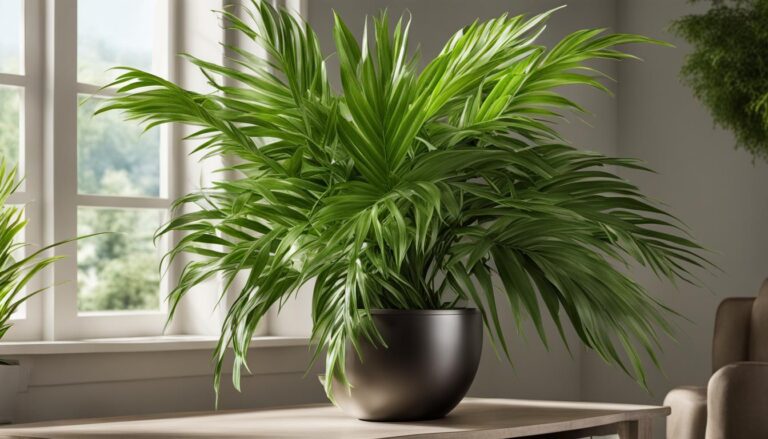
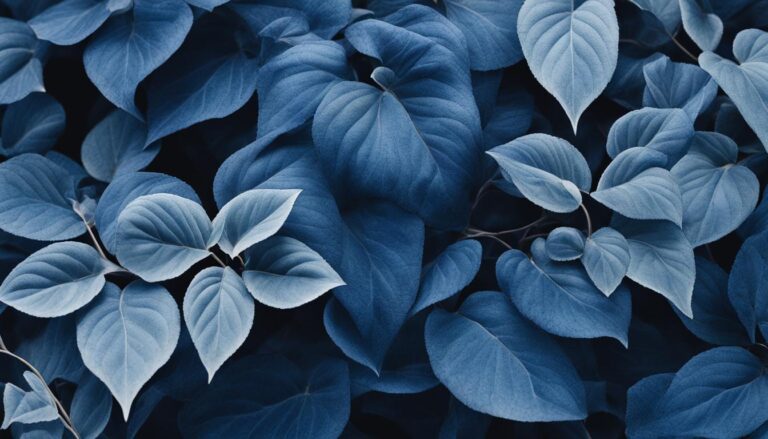
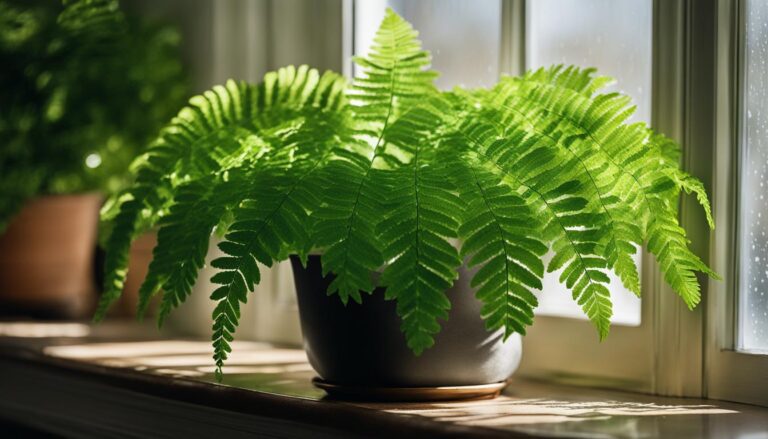
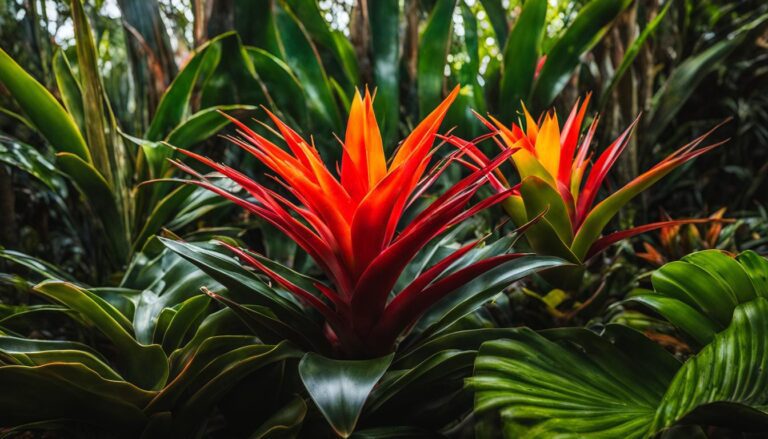
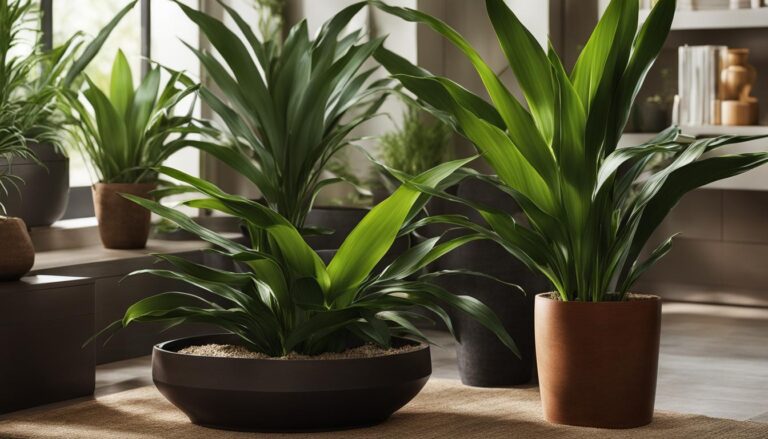
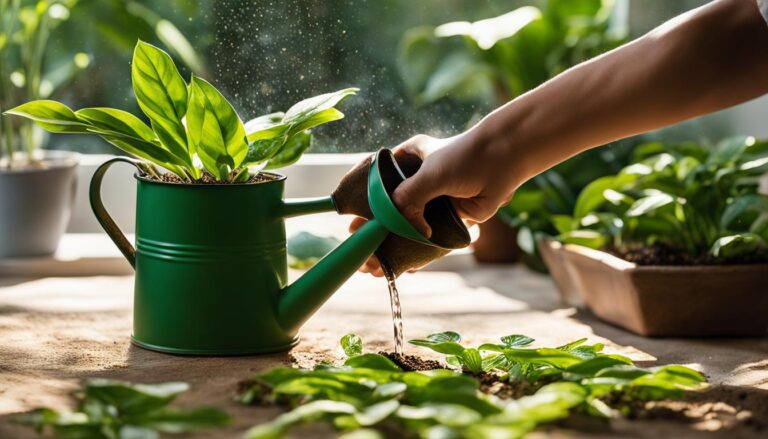
4 Comments
Comments are closed.